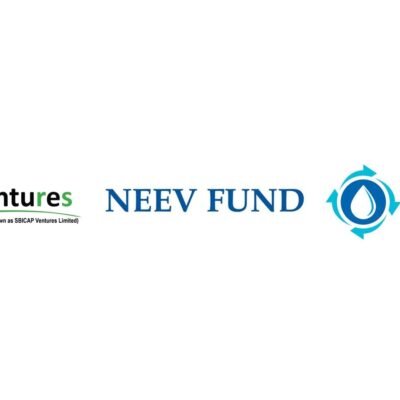A new report on private equity refutes the nursing home sector’s argument that private investment has fallen significantly in recent years, calling an estimate of 5% ownership “inaccurate” due to limited ownership transparency.
In “Private Equity Is Continuing to Acquire – and Bankrupt – Nursing Homes,” the Private Equity Stakeholder Project identifies six new private equity investments since its 2021 report on nursing homes. It also calls out companies including Genesis Healthcare and Legacy Healthcare in damning the influence of private, often masked investors.
“Private equity firms are continuing to acquire nursing homes, even if at lower rates than in previous years,” the report said. “While it is true that major private equity firms like Carlyle have since exited the nursing home space, small and middle market firms continue to acquire and operate nursing homes throughout the country. Due to their smaller size, these investors have an easier time having their nursing home acquisitions and ownership stakes fly under the radar.”
The nonprofit Stakeholder Project seeks to bring transparency to private equity investments across all industries. Its latest report suggests PE ownership is likely closer to 13% of America’s roughly 15,000 nursing homes, and it links such owners to suppressed staffing levels and lapses in care.
The American Health Care Association and LeadingAge have both used the 5% statistic — also used by the Centers for Medicare & Medicaid Services and other government agencies — in past comments on the influence of private equity. Previous research had confirmed a slowdown of PE activity in the space through 2023.
AHCA/NCAL told McKnight’s Long-Term Care News Wednesday that it’s “important to recognize that private equity ownership is not the norm in long-term care.”
“The reality is that owners of long-term care facilities are extremely diverse and are often run by Main Street, not Wall Street,” the nation’s largest nursing home trade association said in a statement emailed to McKnight’s Long-Term Care News. “Focusing on private equity in long-term care has become a distraction from the real issues that impact the majority of providers, like reductions to Medicaid and persistent workforce shortages — these are the real threats. Neither ownership nor line items on a budget sheet prove whether a long-term care provider is committed to its residents.
“We’ll continue working with policymakers to ensure long term care is properly funded and supported, so seniors and caregivers get the resources they need,” the association added.
They have asked federal regulators to strike a balance between adding new layers of oversight and allowing the sector to strike deals that will bring needed investment in facilities and operations.
Wall Street interest remains
After the Stakeholder Project’s first nursing home report, the Biden administration launched a major offensive targeting “Wall Street” acquisitions of healthcare facilities. The Centers for Medicare & Medicaid Services unveiled a new ownership database in 2022, but critics have noted that nursing homes have often avoided reporting their PE connections.
For instance, the Portopiccolo Group, which acquired an estimated 136 nursing homes from 2016 through 2022, was not mentioned in the database, the report noted. Today, only the firm’s two owners are listed in the CMS database, but not the name Portopiccolo itself.
CMS is continuing to collect more information about ownership and inter-related ownership groups, though the latest reporting requirements for nursing homes have been delayed until Aug. 1.
Overall, complex ownership structures and lack of transparency around private equity in general make it difficult to track which firms are currently invested in skilled nursing facilities, report authors argue. Related parties, “monetizing of real estate” through lease arrangement and other “profit-seeking strategies … can put residents at increased risk,” said Michael Fenne, Senior Research & Campaign Coordinator, Healthcare for PESP.
“These buyouts often result in unnecessary debt and reduced operating budgets for the nursing homes, and a shift away from a focus on well-being for residents,” Fenne added. “But a lack of transparency, along with complex ownership structures, make it difficult for the public to know the true scope of the problem.”
Owners in the spotlight
The report lays out for readers at least 18 nursing home operators — some also operating in the senior living space — their PE investors, states where they’re doing business and, where applicable, their real estate investment trust partners.
It also lists recent private equity nursing home acquisitions over the last three years; case studies of the effects of PE investment at Genesis Healthcare and Legacy Healthcare; and bankruptcies among private equity-backed nursing home chains such as LaVie Care Centers/Consulate Health Care and Gulf Coast Healthcare.
In detailing Cascade Capital Group’s 2024 $85 million purchase of one of Iowa’s largest nursing home chains, including 29 facilities, 2,346 skilled-nursing beds, and 326 assisted living units. It turned those facilities over to its Legacy management arm.
In the case of Genesis, the Stakeholder project traces a $50 million investment from Pinta Capital ahead of the major provider’s decision to delist from the stock market and go private. Genesis facilities are obvious in CMS data because of its past coordinated branding efforts, and the report notes that 73 of the 219 facilities listed have a one-star rating.
Neither Genesis nor the Portopiccolo Group responded to McKnight’s request for comment on the report Wednesday.
Care concerns
The report also detailed official citations and patient care lapses among PE-backed facilities, underscoring its link between private investment and declines in care.
Wednesday’s report cited a 2021 study from the National Bureau of Economic Research that found linked private equity ownership of nursing homes with an 11% increase in patient mortality explained by “declines in measures of patient well-being, nurse staffing, and compliance with care standards.”
Facing the current federal regulatory and policymaking landscape, the report said, state legislatures “may prove the most likely avenues to win legislation necessary to protect patients, workers, and communities from private equity’s harms in nursing homes.”
The Stakeholder Project called on state policymakers to step up their regulation of private equity given shifting politics in Washington, DC, and at CMS. It recommended changes that would:
- Increase transparency
- Provide agencies the right to approve or deny SNF mergers or acquisitions
- Require more financial reporting through annual audit reports
- Adopt “anti-looting measures” that prohibit owners from paying themselves
- debt-funded dividends
- Limit sale-leaseback arrangements
In addition, the report raises concerns about private credit arrangements with lenders connected to private equity firms and warns that those will increase as the private lending market grows.




